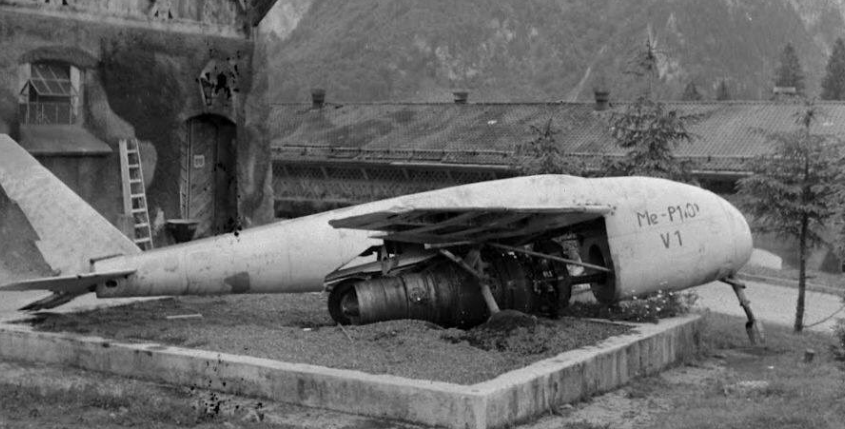
The Messerschmitt P.1101 stands as a testament to the tumultuous final years of World War II, representing Germany's ambitious endeavours in jet fighter technology. Developed in 1944 as part of the German Emergency Fighter Program, the P.1101 was poised to be a single-seat, single-jet marvel. In this article, we delve into the intriguing history and design evolution of the P.1101, a project that never saw combat but left a lasting impact on the world of aviation.
Prompted by the urgency of the war, in 1944 the German Emergency Fighter Program was announced by the Reichsluftfahrtministerium to build a new second generation fighter to aid the German war efforts of the Luftwaffe. The Messerschmitt design bureau responded swiftly to the design specifications issued on July 15, 1944. Within a remarkable nine days, they presented a preliminary paper design that envisioned a distinctive aircraft. The P.1101 featured a short and wide fuselage, tricycle landing gear, mid-mounted sweptback wings, and a high V-configured tail. The single HeS 011 jet engine was housed within the fuselage, with rounded intakes on either side of the cockpit.

By late August 1944, the design underwent significant changes. The intended wing design was abandoned in favour of adapting the outer wing of the Me262 to simplify the manufacturing process and this resulted in a sleeker incarnation. The final design was submitted on November 10, 1944, with material selection for production initiated the following month. Despite the selection of a competing design from Focke-Wulf by the Reichsluftfahrtministerium (RLM) on February 28, 1945, work on the P.1101 persisted. The improved design of the P.1101L consisted a pressurized cockpit and armoured canopy, and was planned to be armed with with two or four 30 mm cannon and Ruhrstahl X4 air-to-air missiles.
As the war neared its end, the P.1101's V1 prototype was under construction, with a projected first flight in June 1945. The airframe, hidden in a tunnel in Oberammergau, was approximately 80% complete when discovered by Allied forces on April 29, 1945. The wings had not yet been attached, but the prototype was seized and shipped to the USA.

Although the P.1101 never fulfilled its intended role in combat, its legacy lived on in unexpected ways. The damage to the prototype precluded any possibility of repair, but some of its design features found new life. Bell, an American aerospace manufacturer, used aspects of the P.1101's design as the foundation for the Bell X-5. This aircraft marked a historic milestone as the first capable of varying its wing geometry in-flight.

The Messerschmitt P.1101 may have remained an unfinished chapter in the annals of aviation, but its impact on the evolution of jet fighter technology cannot be overstated. In its brief existence, the P.1101 showcased Germany's determination to push the boundaries of aeronautical innovation, leaving behind a legacy that influenced post-war aircraft development.
